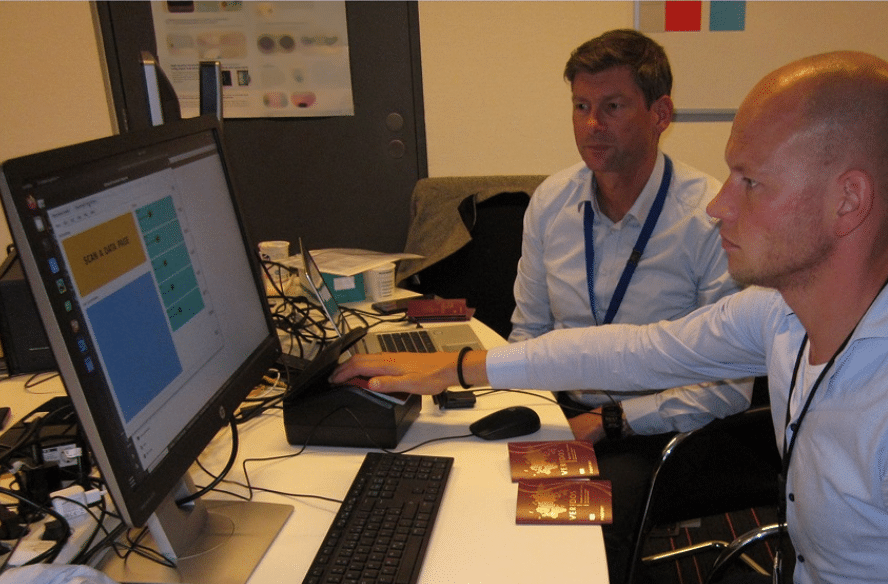Two years ago, the EU-funded “D4FLY” project started, with the aim of improving document and identity verification techniques at border-crossing points. One of the objectives is to speed up the border control process for travelers while ensuring high verification accuracy and security. In addition to contributing to several work packages, Veridos is the overall coordinator of the project. At the halfway point of the project, D4FLY has achieved its first positive results, despite challenges due to the ongoing pandemic.
Passport control can be a time-consuming and stressful process for travelers and border control officers alike. The D4FLY project, which is funded by the EU research framework program Horizon 2020, is therefore researching new solutions for innovative identity verification at border crossings.
Integrated identity solutions provider Veridos has been coordinating the project since 2019, working with 18 partners, including representatives from border control authorities, universities, research institutes and industrial companies. The vision is a seamless on-the-fly border control solution that allows faster identity verification with high accuracy.
One focus area covers the evaluation and advancement of biometric technologies such as iris verification “on the move,” 3D face image verification and somatotype analysis based on a full-body image. In combination, such methods support rapid identity verification with a very high level of accuracy and security – without the need for the traveler to stop in front of a device.
Multi-biometric verification and biometric fusion technologies form the design basis of a secure “biometric corridor” that can significantly speed up border controls. The process for travelers is simple and fully compliant with EU data protection and privacy regulations. Before starting their journey, passengers register at special enrollment kiosks to verify their identity and capture the required biometric characteristics. Then, as travelers approach the checkpoint at their destination, they can simply walk through a biometric corridor. There, multiple sensors are installed to check the captured data against the previously captured reference data, for a secure and very fast verification.
The first prototype of such a biometric corridor has been designed and initial promising results have been achieved, however, the technologies must be continuously developed to prevent misuse and manipulation. D4FLY is therefore also investigating techniques for the detection of presentation attacks, in which, for example, face masks are used to circumvent biometric verification technology.
“Veridos has implemented many state-of-the-art border control solutions around the world. With D4FLY, we strengthen our knowledge in the latest verification technologies and guarantee the delivery of future-proof-solutions,” explains Andreas Räschmeier, CEO of Veridos. He continues: “For instance, within D4FLY Veridos is leading the research into the use of iris recognition on the move. The iris has proven to be a great biometric feature because it does not change throughout a person’s lifetime, it is unique, and it allows touchless verification even while the person is moving.”
The project is initially scheduled to run until August 2022. In a future phase of the project, research and development around the authentication of travelers and document verification will be further advanced.
